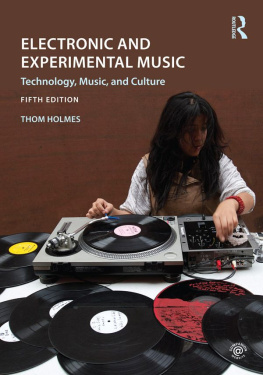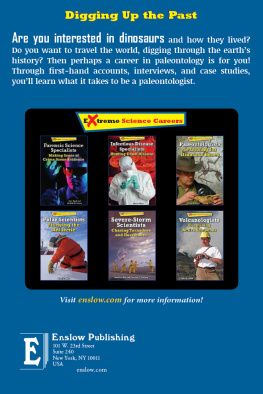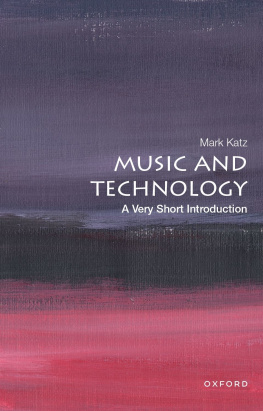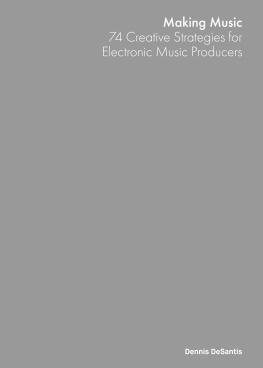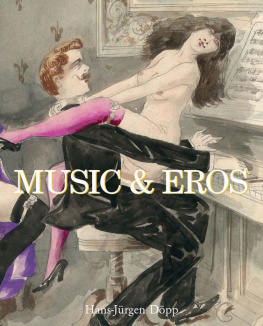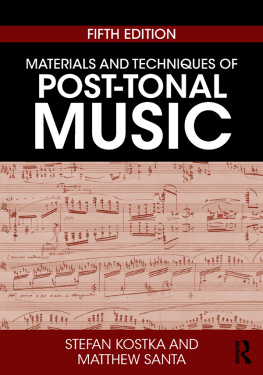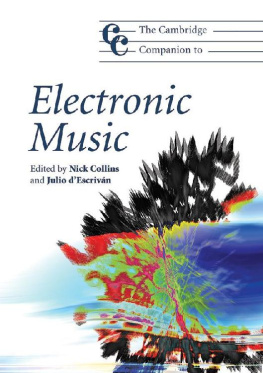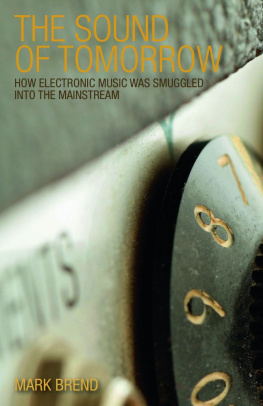Thom Holmes - Electronic and Experimental Music: Technology, Music, and Culture
Here you can read online Thom Holmes - Electronic and Experimental Music: Technology, Music, and Culture full text of the book (entire story) in english for free. Download pdf and epub, get meaning, cover and reviews about this ebook. year: 2015, publisher: Routledge, genre: Non-fiction. Description of the work, (preface) as well as reviews are available. Best literature library LitArk.com created for fans of good reading and offers a wide selection of genres:
Romance novel
Science fiction
Adventure
Detective
Science
History
Home and family
Prose
Art
Politics
Computer
Non-fiction
Religion
Business
Children
Humor
Choose a favorite category and find really read worthwhile books. Enjoy immersion in the world of imagination, feel the emotions of the characters or learn something new for yourself, make an fascinating discovery.
- Book:Electronic and Experimental Music: Technology, Music, and Culture
- Author:
- Publisher:Routledge
- Genre:
- Year:2015
- Rating:4 / 5
- Favourites:Add to favourites
- Your mark:
Electronic and Experimental Music: Technology, Music, and Culture: summary, description and annotation
We offer to read an annotation, description, summary or preface (depends on what the author of the book "Electronic and Experimental Music: Technology, Music, and Culture" wrote himself). If you haven't found the necessary information about the book — write in the comments, we will try to find it.
Electronic and Experimental Music: Technology, Music, and Culture provides a comprehensive history of electronic music, covering key composers, genres, and techniques used in analog and digital synthesis. This textbook has been extensively revised with the needs of students and instructors in mind. The reader-friendly style, logical organization, and pedagogical features of the fifth edition allow easy access to key ideas, milestones, and concepts.
New to this edition:
A companion website, featuring key examples of electronic music, both historical and contemporary.
Listening Guides providing a moment-by-moment annotated exploration of key works of electronic music.
A new chapterContemporary Practices in Composing Electronic Music.
Updated presentation of classic electronic music in the United Kingdom, Italy, Latin America, and Asia, covering the history of electronic music globally.
An expanded discussion of early experiments with jazz and electronic music, and the roots of electronic rock.
Additional accounts of the vastly under-reported contributions of women composers in the field.
More photos, scores, and illustrations throughout.
The companion website features a number of student and instructor resources, such as additional Listening Guides, links to streaming audio examples and online video resources, PowerPoint slides, and interactive quizzes.
Thom Holmes: author's other books
Who wrote Electronic and Experimental Music: Technology, Music, and Culture? Find out the surname, the name of the author of the book and a list of all author's works by series.

